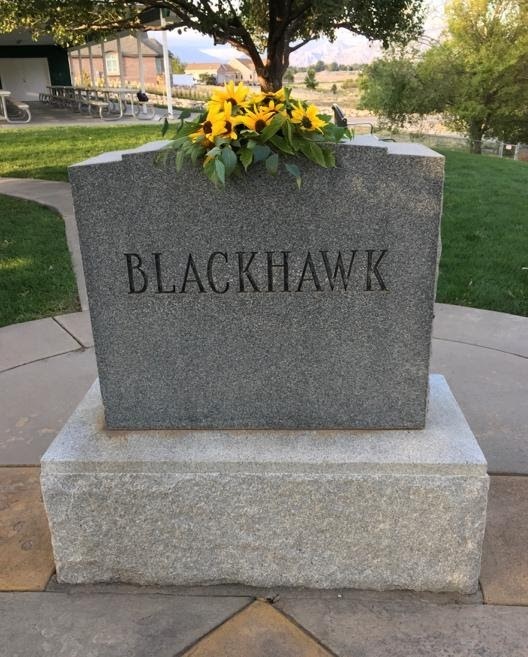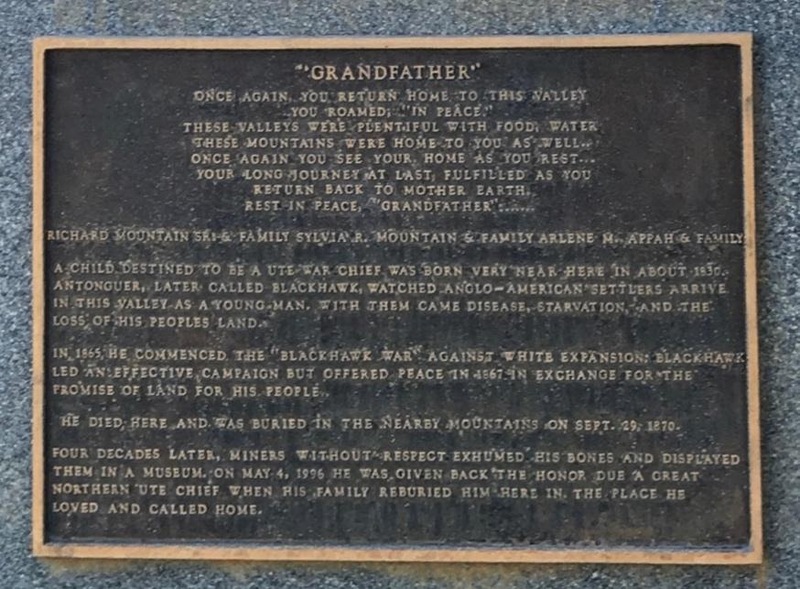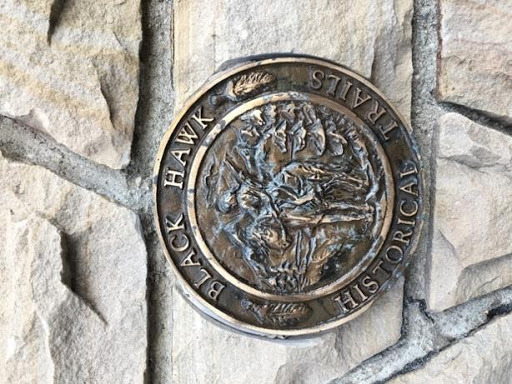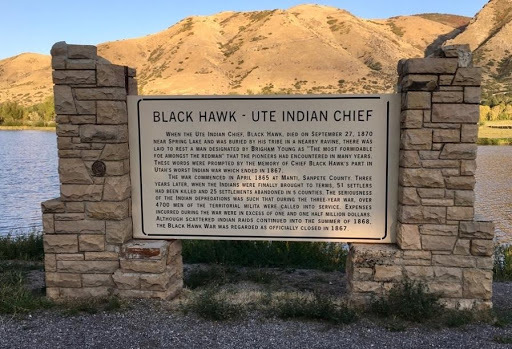Black Hawk Burial Site
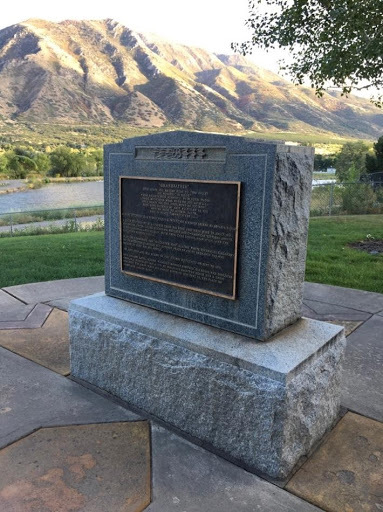
Brigham Young said in 1870 that Black Hawk was "the most formidable foe amongst the red men that the Saints have had to encounter.” Black Hawk experienced both support and hostility from Utah settlers, and his final resting place is marked by a thoughtful memorial that reflects his goal to care for his homeland.
Antonguer, or Black Hawk, is one of the most iconic and controversial figures in early territorial Utah history. He led the 1865-1867 Black Hawk War.
Mormon settlers who arrived in Ute lands in 1847 called Black Hawk “a friendly Indian” in his youth, however, conflict emerged between the settlers and natives. Historians theorize that Black Hawk was the only male survivor of the Creek Canyon Battle in March 1849. “The bloodiest week of Indian killing in Utah history” occurred on February 8, 1850 at the battle at Fort Utah when a group of Utes awaited refuge at the fort – Black Hawk and his family among them – but found themselves caught in the middle of violence. Black Hawk helped the Mormons during the battle. For the next fifteen years, despite continued conflicts and starvation, Black Hawk tried to maintain relatively peaceful relations with the settlers. However, some historians believe that what he witnessed during that battle lingered and motivated him to break his loyalty with the Mormon settlers and start the Black Hawk War on April 9, 1865. The majority of violence occurred 1865-1867, but intermittent conflicts continued until 1872.
Though a “dozen men in Utah claim the honor of killing Black Hawk,” he actually died of tuberculosis and an old wound. In 1869, just prior to his death, Black Hawk declared a “mission of peace” as he visited every “village from Cedar City on the South to Payson” that lost human lives or property, and asked forgiveness from the Mormon pioneers. While Black Hawk experienced both support and hostility from the settlers, his final resting place is marked by a thoughtful memorial, one that reflects his aim to care for his people and homeland.
In the decades following his 1870 death and burial near Spring Lake Villa, Utah, the controversial identity of Black Hawk resurfaced. In 1911, miners unearthed and displayed Black Hawk’s bones and personal objects, which eventually were placed in a museum in Salt Lake City. After additional relocations, Shane Armstrong and Charmaine Thompson conducted a project in 1995 to locate Black Hawk’s remains and found them at the BYU Museum of Peoples and Cultures. On May 4 the following year, Black Hawk’s family and tribe received these remains and reburied him at a memorial close to the original 1870 burial site. The Salt Lake Tribune reported that “more than 2,000 non-Utes” attended the ceremony. The official dedication for the current permanent marker took place on September 27, 1997.
Images

